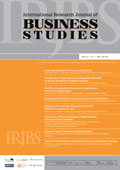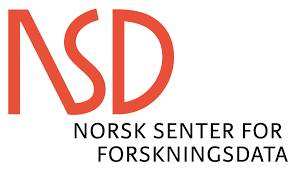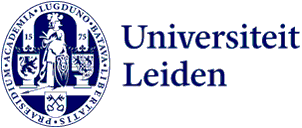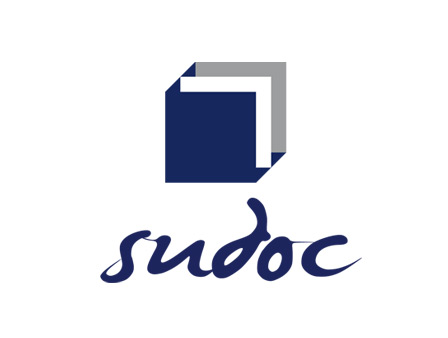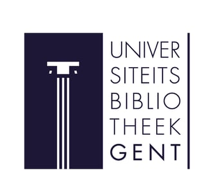Article Metrics |
|
|
Model of Corporate Value Improvement Through Investment Opportunity in Manufacturing Company Sector
Abstract
This study aims to analyze the significance of the direct and indirect effect of
institutional ownership (INST), profitability (ROI), funding policy (DER), and
dividend policy (Tobin’s Q) through investment opportunity (MV/BVE). The
research data used 21 samples of manufacturing companies listed on the
Indonesia Stock Exchange (IDX) during the 2012-2016 period. Data analysis
used path analysis with the help of EViews 9 and Sobel test to know the effect of
investment opportunity as an intervening variable. The interpretation findings
of the first line analysis model show that Profitability directly affects positively
and significantly on Corporate Value. Whereas, based on second-line analysis
model, Funding Policy and Dividend Policy indirectly have significant effects
on Corporate Value through Investment Opportunity variable. Simultaneously,
all independent variables affect 97.45% of Investment Opportunities and
amounted to 97.97% of Corporate Value through Investment Opportunities.
Keywords:
Corporate value, institutional ownership, profitability, funding policy, dividend policy, investment opportunity.
*Department of Management, Faculty of Economics, Universitas Islam Sultan Agung (UNISSULA), Jl. Kaligawe Raya Street Km.4, Semarang, 50112,
PO Box 1054/SM, Indonesia.
Full Text:
References
Adenugba, A. A., Ige, A. A., & Kesinro, O. R. (2016). Financial leverage and firms’ value: a study of selected firms in Nigeria.
European Journal of Business, Economics and Accountancy, 4(2), 1–19. Retrieved from http://www.idpublications.org/ejbea-vol-4-no-2-2016/
Agrawal, A., & Jayaraman, N. (1994). The Dividend Policies of All-Equity Firms: A Direct Test of the Free Cash Flow Theory.
Managerial and Decision Economics, 15(2), 139–148. Retrieved from http://www.jstor.org/stable/2487787
Ahn, S., Denis, D. J., & Denis, D. K. (2006). Leverage and Investment in Diversified Firms. Journal of Financial Economics, 79(2),
–337. https://doi.org/10.1016/j.jfineco.2005.03.002
Aivazian, V. A., Ge, Y., & Qiu, J. (2005). The Impact of Leverage on Firm Investment: Canadian Evidence. Journal of Corporate
Finance, 11(1–2), 277–291. https://doi.org/10.1016/S0929-199(03)00062-2
Akinlo, O., & Asaolu, T. (2012). PROFITABILITY AND LEVERAGE: EVIDENCE FROM NIGERIAN FIRMS. Global Journal of Business
Research, 6(1), 17–25. Retrieved from http://www.theibfr2.com/RePEc/ibf/gjbres/gjbr-v6n1-2012/GJBR-V6N1-2012-3.pdf
Alfaraih, M., Alanezi, F., & Almujamed, H. (2012). The Influence of Institutional and Government Ownership on Firm
Performance: Evidence from Kuwait. International Business Research, 5(10). https://doi.org/10.5539/ibr.v5n10p192
Alonso, De, A. P., Iturriaga, L. F. J., & Rodryguez, J. A. S. (2005). Financial decisions and growth opportunities: a Spanish firm’s
panel data analysis. Applied Financial Economics, 15(6), 391–407. https://doi.org/10.2139/ssrn.250717
Altan, M., & Arkan, F. (2011). Relationship Between Firm Value And Financial Structure: A Study On Firms In ISE Industrial
Index. Journal of Business & EconomicsResearch, 9(9), 61–65. https://doi.org/10.19030/jber.v9i9.5636
Baker, H. K. (2009). Dividends and Dividend Policy. New Jersey: John Wiley & Sons, Inc. https://doi.org/10.1002/9781118258408.ch1
Baker, H. K., & Martin, G. S. (2011). Capital Structure and Corporate Finance Decisions: Theory, Evidence, and Practice. New
Jersey: John Wiley & Sons, Inc. https://doi.org/10.1002/9781118266250
Budagaga, A. (2017). Dividend Payment and Its Impact on the Value of Firms Listed on Istanbul Stock Exchange: A Residual
Income Approach. International Journal of Economics and Financial Issues2, 7(2), 370–376.
Cheng, Y.-S., Liu, Y.-P., & Chien, C.-Y. (2010). Capital structure and firm value in China: A panel threshold regression analysis.
African Journal of Business Management, 4(12), 2500–2507. Retrieved from http://www.academicjournals.org/AJBM
Cheung, W. M., Chung, R., & Fung, S. (2015). The Effect of Stock Liquidity on Firm Value and Corporate Governance: Endogeneity
and REIT Experiment. Journal of Corporate Finance2, 35, 211–231. https://doi.org/10.1016/j.jcorpfin.2015.09.001
Emamalizadeh, M., Ahmadi, M., & Pouyamanesh, J. (2013). African Journal of Business Management Impact of financial
leverage on dividend policy at Tehran Stock Exchange: A case study of food industry, 7(34), 3287–3296. https://doi.
org/10.5897/AJBM12.650
Gamayuni, R. R. (2015). The Effect Of Intangible Asset, Financial Performance And Financial Policies On The Firm Value.
INTERNATIONAL JOURNAL OF SCIENTIFIC & TECHNOLOGY RESEARCH, 4, 1. Retrieved from www.ijstr.org
Hassanpoor, D., & Pourali, M. R. (2014). The Relationship between Return on Equity and Investment Opportunities of the Firms
Listed in Tehran Stock Exchange. Research Journal of Recent Sciences, 3(9), 10–14. Retrieved from www.isca.me
Hermuningsih, S. (2013). Profitability, Growth Opportunity, Capital Structure, and the Firm Value. Bulletin of Monetary,
Economics, and Banking, 115–135. https://doi.org/10.21098/bemp.v16i2.440
Jensen, M. C. (1986). Agency Costs of Free Cash Flow, Corporate Finance, and Takeovers. The American Economic Review,
(2), 323–329. Retrieved from https://sfinm.files.wordpress.com/2013/10/agency-costs-of-fcf-jensen.pdf
Jung, K., & Kwon, S. Y. (2002). Ownership structure and earnings informativeness: Evidence from Korea. The International
Journal of Accounting, 37(3), 301–325. https://doi.org/10.1016/S0020-7063(02)00173-5
Kallapur, S., & Trombley, M. A. (1999). The Association Between Investment Opportunity Set Proxies and Realized Broth.
Journal of Business and Accounting, 26(3), 505–519. https://doi.org/10.1111/1468-5957.00265
Khan, M. N., Nadeem, B., Islam, F., Salman, M., & Gill, H. M. I. . (2016). Impact of Dividend Policy on Firm Performance: An
Empirical Evidence From Pakistan Stock Exchange. American Journal of Economics, Finance and Management, 2(4),
–34. Retrieved from http://files.aiscience.org/journal/article/pdf/70200100.pdf
Mokhtari, Z., & Makerani, K. F. (2013). Relationship of Institutional Ownership with Firm Value andEarnings Quality: Evidence
from Tehran Stock Exchange. International Journal of Economy, Management and Social Sciences, 2(7), 495–502.
Myers, M. D. (1997). Qualitative Research in Information Systems. MISQ Discovery. https://doi.org/10.2307/249422
Nix, P., & Chen, J. . (2013). The Role of Institutional Investors in Corporate Governance (1st Ed). Hampshire: Palgrave Macmillan.
Odit, P. M., & Chittoo, H. B. (2008). Does Financial Leverage Influence Investment Decisions? The Case of Mauritian Firms.
Journal of Business Case Studies, 4(9), 49–60. https://doi.org/10.19030/jbcs.v4i9.4807
Priatinah, D., & Kusuma, P. . (2012). Pengaruh Return On Investment (ROI), Earning Per Share (EPS), dan Dividen Per Share
(DPS) Terhadap Harga Saham Perusahaan Pertambangan yang Terdaftar di Bursa Efek Indonesia (BEI) Periode 2008-
Jurnal Nominal, 1(1), 50–64.
Priya, P. V., & Mohansundari, M. (2016). Dividend Policy and Its Impact on Firm Value: A Review of Theories and Empirical
Evidence. Apeejay- Journal of Management Sciences and Technology, 3(3), 59–69.
Rahim, A. R., Yaacob, H. M., Alias, N., & Nor, M. F. (2010). Investment, Board Governance and Firm Value: A Panel Data
Analysis. International Review of BusinessResearch Papers, 6(5), 293–302.
Riahi-Belkaoui, A. (2000). Accounting and the Investment Opportunity Set. Westport: Quorum Books. Retrieved from https://
books.google.co.id/books/about/Accounting_and_the_Investment_Opportunit.html?id=dpYch8zkIaUC&redir_esc=y
Rizqia, D. A., Aisjah, S., & Sumiati. (2013). Effect of Managerial Ownership, Financial Leverage, Profitability, Firm Size, and
Investment Opportunity on Dividend Policy and Firm Value. Research Journal of Finance and Accounting, 4(11), 120–
Retrieved from www.iiste.org
Sajid, M., Mahmood, † ---Amir, & Sabir, ---Hazoor Muhammad. (2016). DOES FINANCIAL LEVERAGE INFLUENCE INVESTMENT
DECISIONS? EMPIRICAL EVIDENCE FROM KSE-30 INDEX OF PAKISTAN Contribution/ Originality. Asian Journal of
Economic Modelling, 4(2), 82–89. https://doi.org/10.18488/journal.8/2016.4.2/8.2.82.89
Slater, S. F., & Zwirlein, T. J. (1996). The Structure of Financial Strategy: Patterns in Financial Decision Making. Journal of
Managerial and Decision Economics, 17(3), 253–266. https://doi.org/DOI: 10.1002/(SICI)1099-1468(199605)17:3<253::AIDMDE750>3.0.CO;2-0
Smith, C. W., & Watts, R. L. (1992). The investment opportunity set and corporate financing, dividend, and compensation
policies. Journal of Financial Economics, 32(3), 263–292. https://doi.org/10.1016/0304-405X(92)90029-W
Subramaniam, R., Devi, S. S., & Marimuthu, M. (2011). Investment opportunity set and dividend policy in Malaysia. African
Journal of Business Management, 5(24), 10128–10143. https://doi.org/10.5897/AJBM11.687
Sucuahi, W., & Cambarihan, J. M. (2016). Influence of Profitability to the Firm Value of Diversified Companies in the Philippines.
Accounting and Finance Research, 5(2), 149. https://doi.org/10.5430/afr.v5n2p149
Sulistiono, S., Moeljadi, Djazuli, A., & Solimun. (2017). Investment Opportunity Set as the Mediation Effect of Capital Structure,
and Corporate Dividend Policy on Firm Value: A Study on Manufacturing Firms in Indonesia Stock Exchange. International
Journal of Applied Business and Economic Research2, 15(22), 303–314.
Wolfe, J., & Sauaia, A. C. A. (2003). The Tobin Q As A Company Performance Indicator. Developments in Business Simulation
and Experimental Learning, 30, 155–159. Retrieved from https://journals.tdl.org/absel/index.php/absel/article/
viewFile/715/684
Copyright (c) 2019 Imam Faozi, Nunung Ghoniyah
International Research Journal of Business Studies has been covered by the following services: | ||||||||||||||||||||||||
|

